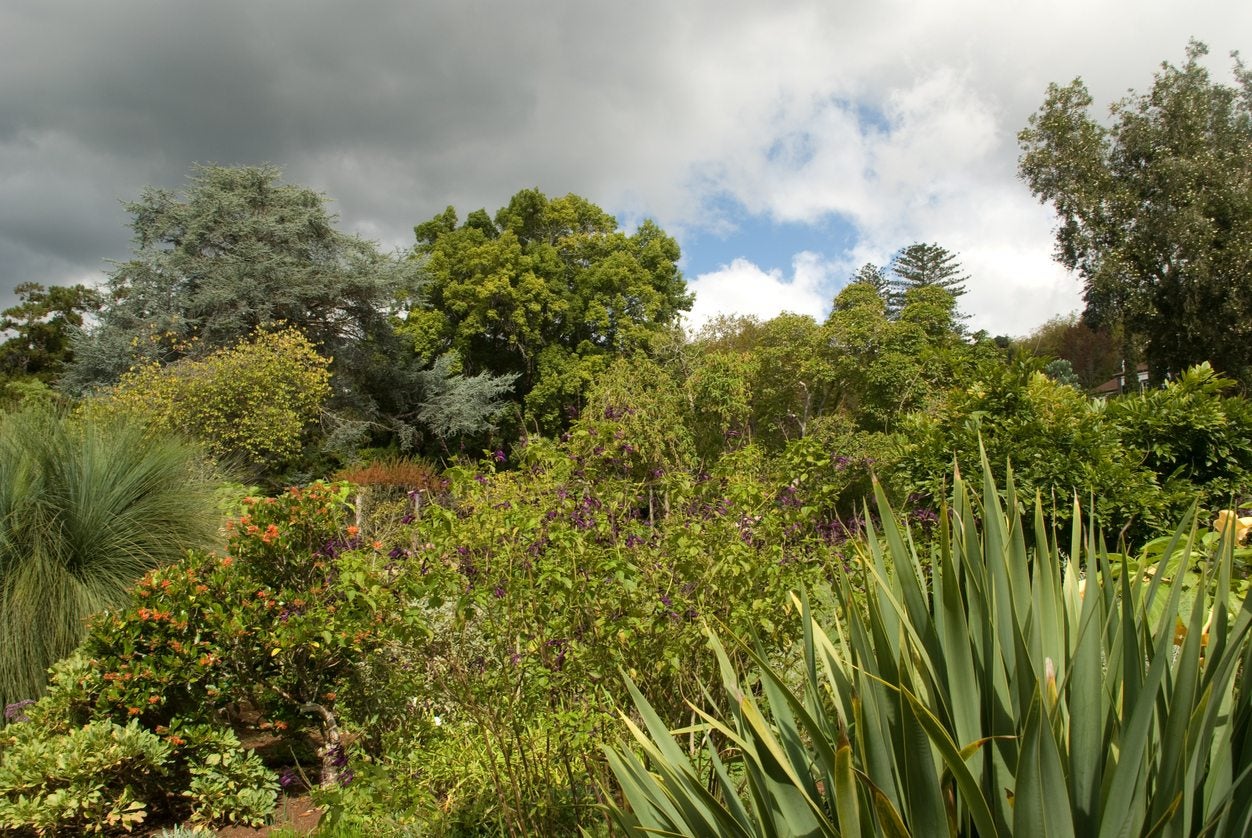Protecting Plants In Severe Weather – Learn About Thunderstorm Plant Damage


The wind howls like a banshee, perhaps the death she portends is the death of your landscape. Heavy rain beats down on the home and landscape like a steady beat of drums. You may even hear the occasional “ting” of hail pelting off windows and siding. Thunder rumbles, shaking the house around you. You look outside and see your landscape plants whipping around in the wind. Lightning strikes off in the distance, for a brief moment lighting up your view, showing you all the destruction, you will have to deal with once the storm passes – downed limbs or trees, pots blown away, plants flattened, etc. Clean up after severe weather can be quite a chore. Continue reading to learn how to protect plants from thunderstorms.
Thunderstorm Plant Damage
Thunderstorms, specifically lightning, are good for plants. The air around us is full of nitrogen, but plants cannot absorb this nitrogen from the air. Lightening and rain put this nitrogen into the soil where plants can absorb it. This is why lawns, gardens, and landscapes look so green after a thunderstorm. Thunderstorms may not be so good for you, though, if a tree limb falls and damages property or if your hanging baskets and containers have flown off to the neighbor’s yard. When there is the threat of severe weather, remove container plants to a sheltered location. “An ounce of prevention is worth a pound of cure,” said Benjamin Franklin. While this is true of so many things, it is also true of preparing for severe weather. Performing regular maintenance of trees and shrubs can prevent a lot of storm damage. All too often we only assess the damage to our trees and shrubs after storms, when we should actually be inspecting them regularly to ensure they aren't damaged when severe weather does hit. Dead, broken, weakened, or damaged branches can cause severe damage to property and people when they come crashing down from high winds or heavy rain. If trees and shrubs are regularly pruned, much of this damage can be avoided.
Protecting Plants in Severe Weather
If you are in an area of high winds or frequent storms, you should stake small and young trees. There are many different kinds of tree stake kits available. Trees should be staked somewhat loosely so they are allowed to sway in the wind slightly. If they are staked too tightly, wind can cause the tree to snap right in half. To prevent severe weather damage to plants, like arborvitae or yews, tie up interior branches with pantyhose so they do not flatten or split in the middle under heavy wind and rain. Small plants that tend to flatten in wind and rain, like peonies, can be covered with a 5-gallon (19 L.) bucket or another sturdy container. Just be sure to weigh this container down with a brick or a boulder to ensure that it doesn’t fly off in the high wind and remove the container immediately after the threat of severe weather has passed. After a storm, assess any plant damage so you know how to properly prepare for the next storm. Preparation is the key to preventing thunderstorm plant damage.
Gardening tips, videos, info and more delivered right to your inbox!
Sign up for the Gardening Know How newsletter today and receive a free copy of our e-book "How to Grow Delicious Tomatoes".
-
 Try The Trend – Turn Any Bed Into A Keyhole Garden With This Clever In-Ground Composter
Try The Trend – Turn Any Bed Into A Keyhole Garden With This Clever In-Ground ComposterKeyhole gardening is an efficient and sustainable practice that saves space. Get started on this DIY project quickly and easily with an in-ground composter.
By Bonnie L. Grant
-
 4 Superfast Composting Methods: Turn Waste Into Garden Gold In 30 Days Or Less
4 Superfast Composting Methods: Turn Waste Into Garden Gold In 30 Days Or LessTry the fastest composting methods to turbocharge your pile and transform kitchen scraps and garden waste into finished compost in just a few weeks.
By Mary Ellen Ellis